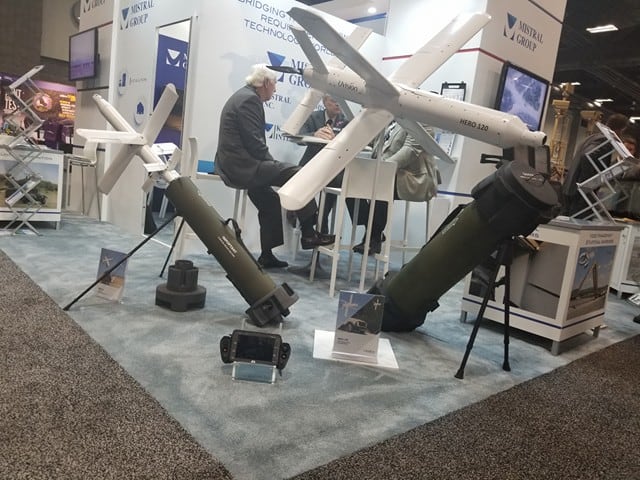Mistral’s Uvision drones are light, man-packable and come armed with a warhead, giving U.S. special operations forces added lethality in areas where support by conventional forces may be limited or non-existent, according to Yossi Gez, the vice president of marketing for Mistral Inc.
The drones come in two variants, the smaller Hero 30 and larger Hero 120, both of which operate on pneumatic launch capability, or air pressure.
The Hero 30 weighs under 20 pounds and has a loiter time of 30 minutes. The small tactical drone comes with an anti-personnel warhead that is also capable of destroying small light-skinned vehicles, according to Gez.
The drones can also be mounted on trucks. A forward-deployed recon team could pack 10 of these on a vehicle and launch them all at once to “clear the way” of enemy forces, Gez said.
Mistral offers a larger variant of the Hero 30 for operations in more advanced countries, where enemy forces may have tanks and larger or more sophisticated weaponry.
The Hero 120 has a one hour loiter time and weighs less than an FGM-148 Javelin anti-tank missile. The drone packs a larger warhead for destroying up-armored vehicles and tanks, according to Gez.
Both drones operate with the same controller and have day-night capabilities. The drones have an added feature that allows for handover of control. Meaning, a small outpost could launch the drone towards a recon team operating outside the base, and hand over control of the drone to the team on the ground.
The Uvision also works in GPS constrained environments, and operators need only to navigate the terrain to strike enemy forces with pinpoint precision, according to Gez.
Army Special Forces has already put the Uvision through extensive testing and is heavily interested in the Uvision system, Gez said.
Shawn Snow is the senior reporter for Marine Corps Times and a Marine Corps veteran.




